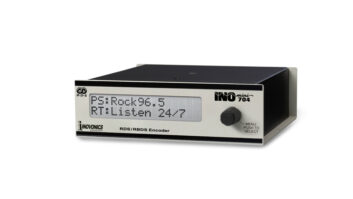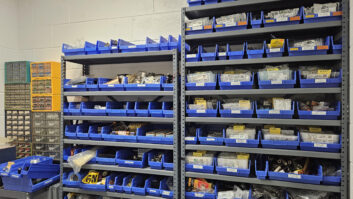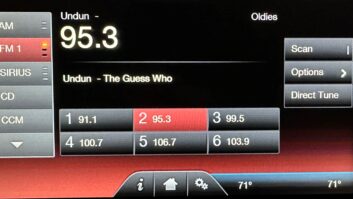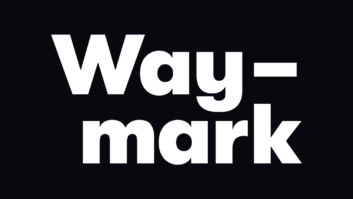The author says the misuse of RDS PS Scrolling capabilities can be a safety hazard on the road.
With the sudden surge in RDS installations and the sudden appearance of PS Scrolling, new issues are at hand that I believe threaten the future of RDS in the United States. As if it hasn’t been a rough enough ride already.
PS (Program Service) data usually consists of a station’s call letters or other eight-character description that never changes. PS Scrolling is the act of updating the PS data dynamically, to hijack previously static information in an effort to compensate for the lack of a true RadioText display capability. The problem is that most RDS radios can display the PS data, and the opportunity to have a dynamic window to the listener is proving too tempting to resist.
I admit I am in favor of utilizing this capacity to pass forward limited information related to the music on the air, for artist and (possibly) song title information has always been the principal benefit of RDS to listeners. Yes, I said possibly song titles.
If PS Scrolling is misused by manipulating PS data for generic advertising messages, our RDS efforts may be in vain. These threats to RDS have been building as recent business interests have arrived on the RDS bandwagon. Recently I received a phone call tipping me off that an RDS advertising proponent was preparing to start giving away “advertising time” to be displayed on RDS radios as an introduction to this new advertising medium.
Advertising medium? A slow, eight-character display is an exciting new advertising channel?
Moving violations
Let’s be clear. There are companies that want to collect advertising money by displaying messages to people in driving their cars. As you contemplate driver safety and driver distraction, the idea of broadcasting advertisements to drivers will start to sound like one of the worst ideas in the history of radio.
Now for some driver safety math: Imagine someone on the freeway driving 60 mph determined to read a 64-character message via the eight-character PS display. Using typical scrolling rates, this car will have traveled two-thirds of a mile during the time it took to read the message. So, who was driving the car?
I have posted an Excel spreadsheet on theradioexperience.com for calculating this driver safety formula. Go ahead and adjust the numbers. I believe you will come to the same conclusion. The only reasonable amount of time spent looking at the RDS display is “a glance.” If you are trying to piece together an advertiser message by reading an eight-character PS display showing fragments of the message at a time, you are probably a threat to public safety.
Type “Driver Distraction” into the Google search engine and you will encounter a universe of activities regarding this issue. Our government, private industries and other social organizations are thoroughly engaged in public debates and legislation considerations surrounding regulatory activities and technical R&D. Not to mention the pleas to these organizations from a human perspective, most notably the organizations created as a result of some tragic accident due to driver distractions.
People have died as a result of fiddling with the radio – and now we want them to read sentences provided by advertisers.
Another problem is that by manipulating the PS, radio stations are in direct defiance of the European and U.S. RBDS standards regarding PS usage. These standards cite concerns for “distraction.” Making matters worse is the fact that PS Scrolling is circumventing the automaker’s agenda for controlling driver distraction. One of the worst cases I have seen was a fairly new Audi with a secondary RDS PS display embedded in the instrumentation, next to the speedometer in the center of the driver’s view.
What if it is remotely possible that PS Scrolling may result in potentially hindering the future of RDS? My greatest concern is that forces in Detroit and Japan may take back their control of the car environment by not enabling RDS radios in future U.S. automobiles.
As I write, the industry is expecting to receive critical feedback soon regarding this practice from the U.S. Department of Transportation National Highway Traffic Safety Administration and (we hope) from the automobile industry. I also want to note the irony in the recent public comments of radio group executives, discussing deteriorating listener shares due to “the abundance of clutter and the over-commercialization of radio.”
So, here we are in the early stages of a potential second chance for RDS. And immediately we have companies ready to press the envelope regarding driver distraction, and overwhelm the eight-character PS display as a new advertising channel? Are you looking forward to seeing a Viagra advertisement over RDS?
RDS does not stand for R-a-D-io S-pam.
Text potential
Perhaps I am trying to point out the different agendas between products and services that enhance our core radio technology as opposed to exploiting it for profit with little regard for public safety. For the second opportune time in a decade, I am investing my time and financial resources assisting fellow engineers with the installation of hundreds of RDS systems. Just as it was in the mid-1990s, there is an element of pride as we attempt to “evolve” FM broadcasting just a bit.
At the same time broadcast engineers are trying to improve upon the base technology, a small carnival of new companies arrive, often operated by non-radio people, ready to exploit RDS in a new “revenue generation opportunity.”
Usually the wilder ideas, such as paper coupons coming out of your RDS radio, are perhaps entertaining as they pass by. But this time an RDS revenue generating scheme has the potential to cause harm to innocent people and the very future of RDS, in large part because of a situation the radio industry is responsible for.
Let’s face it – radio stations chose to not install RBDS encoders over the last decade despite the fact that we had receiver manufacturers, such as Denon, Pioneer, Onkyo and Delphi, building radios with RadioText capabilities. This lack of action in the 1990s cost us those manufacturers willing to produce RDS radios with RadioText displays.
Now, by the grace of radio manufacturing economies of scale, the automobile manufacturers seem to build universal radios for the entire world – RDS radios, I suspect, because of European RDS-intensive practices. And because the rest of the world seems adamantly against distracting drivers, these radios do not support Radio Text let alone PS Scrolling, which has been deemed a public safety hazard.
What we really need to do, instead of overusing the PS display space, is re-establish rapport between the radio industry and receiver manufacturers. With so many radio groups giving the thumbs up to RDS, we may be able to resurrect their interest in adding RadioText to new radio models.
In a way it is the broadcasters’ “turn” to show their renewed willingness to invest in RDS, to prove they are reversing the lack of interest shown during the last decade. Their investment in RDS technology will be an indication that the radio industry is ready to support the huge investment receiver manufacturers make to bring new products to market.
As a product developer, we have created Parallel Dynamic Text, featuring the capability to maintain two separate text messages for each on-air event – shorter messages specifically formatted for PS Scrolling that minimize the use of the display space, and longer form messages that are sent to the more appropriate RadioText group. We will continue to work toward our goal of transitioning away from PS Scrolling entirely.
Turn it on, tune it in and listen. Our recent RDS technical developments may bring you “modest” information about what you’re listening to. Let’s accomplish this by taking the high road and considering public safety while trying to expand our technological reach. Together, we will have improved upon the radio experience for the listener and perhaps contributed responsibly to our industry.
Mission accomplished.












